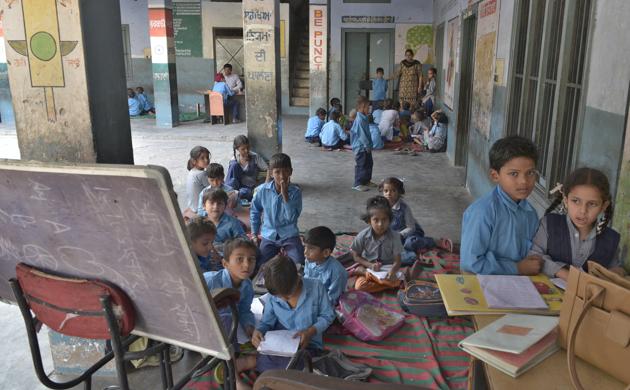Why the learning deficit should not surprise us
Textbooks often don’t reach students in State-run schools on time. This is a drag on education
The Panna Tiger Reserve in Madhya Pradesh has one of the finest forests in India. Inside those thick, deciduous jungles, there’s a ‘primary school’, overlooking the river Ken: Two decrepit rooms with blackboards, a couple of discoloured educational charts and maps on their dirty cream walls, one temporary teacher, a defunct toilet, and the worst of all these deficits, a non-functional midday meal scheme. “It has been like this for years now,” the teacher, a young man, told me. “Nothing reaches this place on time, including textbooks”.

Every time I hear about the learning deficit of students who go to State-run institutions, I am reminded of this school and the vacant look on the faces of the poor tribal students. How on earth can a child learn or a teacher teach without basic infrastructure, books, and teaching aids? In the last decade or so, after the Right to Education Act came into force, India has upgraded its school infrastructure, but, as this school showed, it’s still a work in progress. So it is not surprising that despite a spike in primary enrolment, the progress in learning remains patchy.
While problems related to physical infrastructure and midday meal schemes in schools are discussed widely, I don’t find much discussion on another key issue that has a serious bearing on the learning levels of students: Textbooks, their quality, and timely delivery. There are many states where students don’t receive their full set of textbooks at the start of the school session, which is April. “At the central level, the State is consumed by NCERT textbooks. The public is also focused on NCERT textbooks. But we must remember these books are used by only 12,000 Central Board of Secondary Education schools in the country. What about textbooks used in other State-run schools? There has been no national-level analysis of the quality of these textbooks,” says Dhir Jhingran, a former IAS officer and currently executive director, Language and Learning Foundation, New Delhi.
In states, textbooks are either produced by their own State Council of Educational Research and Training agencies or textbook corporations. There are four problems with textbooks in states: Production, printing, distribution and quality. Many authors who write these textbooks have little expertise on how books for children should be framed or an understanding of pedagogy. Their printing is often messy and there is hardly any quality control. I was aghast to know that many of these textbooks are written during ‘workshops’ of authors/teachers without any framework. Unsurprisingly, these textbooks are information-loaded, the language is often not friendly to children and the context alien to local students. Worse, authors don’t even go to the field to see how these textbook are faring because SCERTS and corporations often lack funds, orientation and staff to undertake such studies for these textbooks, which are primarily read by poor students. Sometimes questionnaires are sent to teachers on the quality of textbooks, but their answers are seldom incorporated.
Coming back to the critical supply-chain management of textbooks, Oxfam, an NGO, provided me with some information on Odisha. According to their report, in the 2017-18 academic session, students of upper primary schools in two districts — Mayurbhanja and Bolangir — did not get their textbooks until August. The report added that there is corruption in the printing and supply system of textbooks.
The good news, however, is that states such as Himachal Pradesh are trying to figure out ways to cut delays in the delivery of textbooks, which ranged in the hill state from 2-137 days (average of 2.5 months) after the commencement of the academic session. After studying the existing system, the problems they identified were: Lack of single person accountability at the block level offices; inefficient supply chain leading to duplication of work and delays due to manual intervention in the supply management ecosystem. Every year, more than 55 lakh books are distributed to eight lakh eligible students across 15,000 schools before the beginning of the academic sessions in the state.
The state government then enlisted a consultancy firm, Samagra, to devise a simple but effective way of tracking the supply of textbooks across the state. The project is funded by the Michael & Susan Dell Foundation. Along with ensuring inventory stock checks at depot level and better coordination between the education department, the Himachal Pradesh Board of School Education and Sarva Shiksha Abhiyan, the Centre’s flagship education programme, for the release of textbook printing tender, there has been a streamlining of book collection by block officials at depots.
It has also put in place a centrally-managed electronic indenting system, which helps in ensuring faster processing of indents and book distribution on short timelines. An online dashboard tracks textbook collection status from depots to blocks and an IVRS system helps teachers to confirm receipt of the textbook by pressing a button on their mobile phones. A WhatsApp group takes care of real-time information dissemination and a special telephone helpline has been set up for block-level officials to get information or solve problems related to textbook distribution. In India, there is no one-size-fits-all solution for even similar problems across a state. But Himachal Pradesh’s effort of streamlining timely distribution of textbooks is worth emulating.
@kumkumdasgupta






